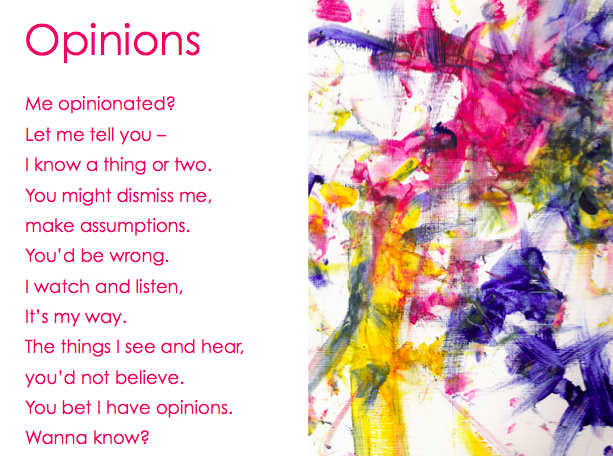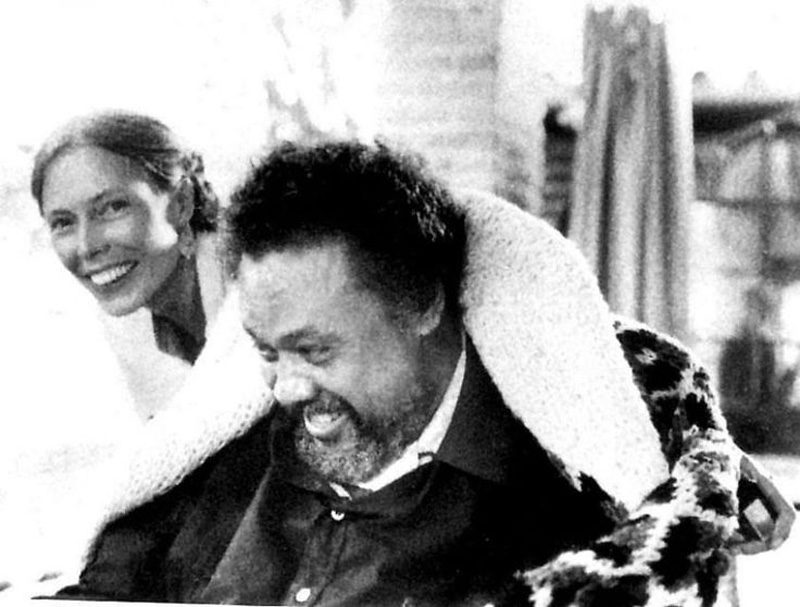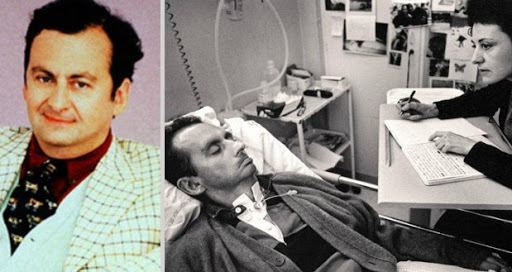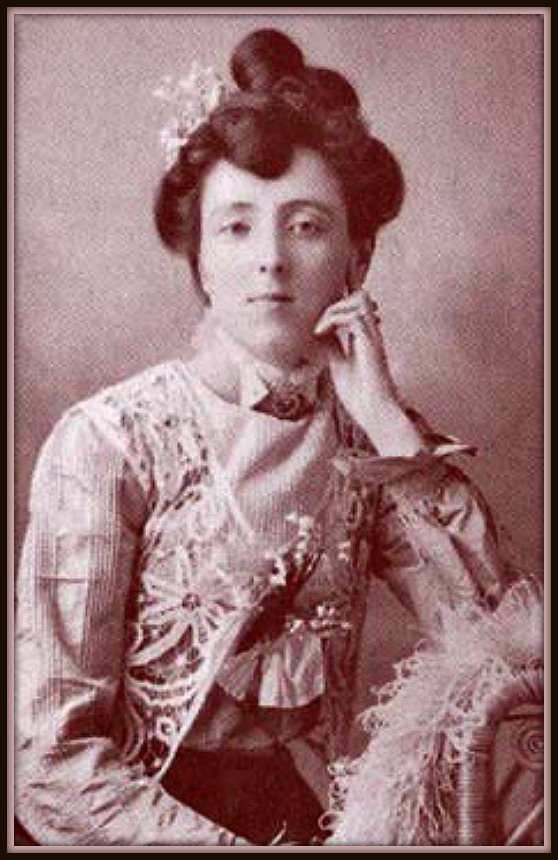
Dear Reader
This Digest is written to recognize people with disabilities for who they really are: authoritative sources on creativity, resilience, love, resistance, science, adversity, a good life and so much more. In a small way we hope this Digest can help take control of the past, correct what the history books have overlooked and influence the future.
The issue begins with an illustrated poem by Kirsteen Main. Her debut collection of poetry, Dear Butterfly was published on April 25th, 2014, (ORDER). This issue also profiles acting sensation Zack Gottsagen, jazz legend Charles Mingus, and authors Jean-Dominique Bauby and Lucy Maud Montgomery.
You can help correct what history has overlooked by sending your comments and suggestions for future issues via this form.
Enjoy! – Al
This week in history ...

April 22nd is the birthday of actor Zack Gottsagen (1985). He is the lead character in the popular road trip movie, Peanut Butter Falcon. His co-stars are Shia LaBeouf and Dakota Johnson. Gottsagen always knew he wanted to be an actor and began performing and dancing in his home state of Florida when he was a child. He studied acting at Zeno Mountain Farms, a film studio committed to featuring people with disabilities in every aspect of filmmaking. Gottsagen created his big break himself. He asked filmmakers Tyler Nilson and Michael Schwartz to write and direct a film for him. “I’m ready to be a movie star,” he told them. They were so taken with Gottsagen’s devotion to his craft and his love of wrestling they decided to write Peanut Butter Falcon to showcase his talent. When offered a hefty sum to feature an A-list actor to play Gottsagen’s character they turned it down.
Peanut Butter Falcon has enjoyed massive popular and critical success with a 95% rating on review aggregator Rotten Tomatoes and box office earnings over $20 million, making it the biggest indie hit of 2019. “Talent… that’s all I’ve got!” said Gottsagen. “I love to act.”

April 22nd is the birthday of jazz legend Charles Mingus (1922). Mingus was a musical prodigy. He became a jazz bassist because racial discrimination and poverty prevented him from pursuing a career in classical music. Nevertheless the Library of Congress placed his music scores besides those of Mozart and Beethoven. “Making the simple complicated is commonplace; making the complicated simple, awesomely simple, that’s creativity,” he said.
Mingus developed ALS in 1977 which prevented him from playing and eventually affected his voice. He continued to compose by humming the melodies and instrumental parts into a tape recorder. His last album was a collaboration with singer Joni Mitchell who added lyrics to his melodies. Mingus viewed the album as his epitaph. “My music is alive,” he said. “It’s about the living and the dead, about good and evil.”
The album was called Mingus when it was released in 1979 shortly after his death. Today it’s known as A Chair in the Sky after a song on the album that Mitchell composed in honour of Mingus. When Mitchell first met Mingus he was sitting in his wheelchair in his Manhattan high-rise. “He was a very commanding figure. It was like he was enthroned,” she said. “It seemed like a regal position.” Shortly before his death Mingus told his wife, “Next time I want to be a star. I want to be flashing all night long. A star stays up there till it burns out and becomes something else.”

On April 23rd Jean-Dominique Bauby journalist and editor-in-chief of ELLE magazine was born (1952). In 1995 at the age of 43 he had a massive stroke. When he woke up from his coma the only part of his body that he could move was his left eyelid. Bauby spent the rest of his days in a hospital on the coast of France; the routine of doctors and therapists interspersed with visits from his two young children. He began to compose a monthly newsletter and then his book, The Diving Bell and The Butterfly. Bauby would compose and edit entire chapters in his head in the mornings, and then dictate it, a letter at a time, to his secretary Claude Mendibil (picture above with Bauby). She would recite the alphabet slowly and he would blink when she came to the correct letter.
Previously Bauby had been immersed in France’s cultural life. Now he cultivated, “the art of simmering memories,” inside what he described as a giant invisible diving bell. “My diving bell becomes less oppressive, and my mind takes flight like a butterfly. There is so much to do. You can wander off in space or in time, set out for Tierra del Fuego or for King Midas’s court,” he wrote.
Bauby’s memoir was published two days before he died. It was made into a film in 2007. “I need to feel strongly, to love and admire, just as desperately as I need to breathe,” he said. A documentary featuring Bauby himself is available here.

On April 24 Lucy Maud Montgomery, the author of the Anne of Green Gables series died (1942). Montgomery’s early life was the opposite of her heroine Anne. Her mother died from tuberculosis when she was two. Her father moved to Saskatchewan leaving her in the care of grandparents who were strict and not affectionate. Montgomery credits this lonely time of her life as helping to develop her creative mind. She began journaling when she was nine years old. Her family considered writing to be a waste of time so she worked in secret. “I struggled on alone, in secrecy and silence. I never told my ambitions and efforts and failures to any one. Down, deep down, under all discouragement and rebuff, I knew I would ‘arrive’ some day,” she wrote.
Montgomery’s adult life was also full of challenges, including depression. “I’m possessed body and soul by this oppression,” she wrote in her journal. Montgomery’s son observed that though his mother experienced great peaks, “she also fell to great depths emotionally.”
In 2008, on the 100th anniversary of the publication of Anne of Green Gables, Montgomery’s granddaughter Kate Macdonald Butler stated that their family wanted to lift the stigma associated with mental illness. And “sweep away the misconception that depression happens to other people, not us—and most certainly not to our heroes and icons.” The family now believes that Montgomery took her own life.
“They say women shouldn’t write, some days I almost give up. But I cannot contain my imagination. I made Anne real. I gave her my love of nature, my love of books and my childhood dreams,” Montgomery wrote in her autobiography.
Did you know?
An invisible disability can include, but is not limited to: cognitive impairment, head injury, autism, multiple sclerosis, myalgic encephalitis, chronic fatigue, and fibromyalgia, d/Deaf and/or hard of hearing, blindness and/or low vision, lupus, HIV positive, Crohn’s disease, colitis, Lyme disease, endometriosis, diabetes, anxiety, depression, PTSD, and more.
Receive your weekly copy of the Disability Digest.
By submitting this form, you are consenting to receive marketing emails from: . You can revoke your consent to receive emails at any time by using the SafeUnsubscribe® link, found at the bottom of every email. Emails are serviced by Constant Contact
This project is a collaboration between Al Etmanski, Plan Institute, and Planned Lifetime Advocacy Network (PLAN).
